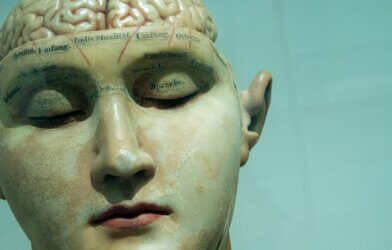Researchers at the Interdisciplinary Center Herzliya in Israel have discovered that adults are more neurologically malleable than previously thought. In their study, they were able to teach a 50-year-old man who was born blind to “see” by ear. This process revealed the development of topographic maps in his brain formed by neural circuits. Until now, this process was thought to occur solely in infancy.
This study has unearthed new understanding on the brain’s capacity for adaptivity and change long after infancy, and may have future implications for adults who have suffered from lost brain function due to a stroke or other event.
“The human brain is indeed more plastic during infancy, but it maintains an enormous potential for reprogramming throughout a person’s life,” says study leader Amir Amedi, head of the Baruch Ivcher Institute for Brain, Cognition & Technology at IDC Herzliya, in a statement.
Classic theories of brain organization state that the brain contains specialized regions built to process auditory, visual, and other kinds of sensory input. Stemming from 1981 Nobel Prize winning research by David H. Hubel and Torsten N. Wiesel, this way of thinking asserts that in order to properly organize these regions, an individual must have exposure to the relevant stimuli early in their development. Without this critical period exposure, the correlated sensory system will not develop. The plasticity of the brain decreases progressively after the end of this critical period, leaving the brain less able to modify itself as a result of novel experiences.
This study is one of Amedi’s research ventures aimed at challenging this assumption, instead holding that sensory regions in the brain can manage processing stimuli outside of their specialty.
A recent review by Professor Amedi and Dr. Benedetta Heimler published in Neuroscience and Biobehavioral Reviews observed the brain activity of healthy visually and hearing-impaired participants. Their findings showed that sensory regions deprived of their natural stimulus can be activated by other senses, such as the auditory cortex being activated by sight or the visual cortex being activated by touch.
This atypical activation has been observed in adults across multiple studies, including those conducted in Amedi’s lab. Researchers have urged a reworking of the classical theories used to understand the brain’s development during critical periods. Rather than only occurring in early infancy or childhood, researchers encourage understanding of the brain’s unique capacity for reversing plasticity and developing specialization all throughout life.
Amedi’s latest study, published in Neuroimage, detailed the process by which the team taught a blind man identified as MaMe, the first syllables of his first and last name, to “see” using his other senses. Using a lab-developed sensory substitution algorithm called EyeMusic, researchers taught MaMe to recognize visual stimuli as “soundscapes,” sound units that convey information about geometric shapes.
These soundscapes communicate an object’s position on the y axis using musical pitch, and the x axis using time. Higher pitches translate to higher locations, and time order corresponds with positioning from left to right.
To interpret their results, the team scanned MaMe’s brain with functional magnetic resonance imaging before and after teaching him to understand and recognize soundscapes.
“After MaMe had learned to interpret soundscapes, his neural circuits were shown to be activated not only in the auditory cortices, but also in the occipital cortex, which receives visual stimuli in sighted people and is not expected to be activated in a congenitally blind individual,” explains Dr. Shir Hofstetter, a postdoctoral fellow at the Spinoza Centre for Neuroimaging in Amsterdam.
“Not only that, the activation followed a pattern of topographical maps – the highly ordered manner in which external stimuli are mapped in all the sensory systems of the human brain,” adds Amedi. “For example, in the visual cortex of sighted people, neighboring locations are ‘mapped’ onto adjacent neurons, whereas places at a great distance from one another are represented by neurons that are further apart.”
Images of MaMe’s brain showed that new topographic maps had formed, tuned to both pitch and time, sometimes concurrently. Similar pitches were represented by adjacent neurons, while vastly distant pitches were likewise represented by neurons far apart from the other.
Until now, the adult brain had never been shown to be capable of forming new topographic maps. The results of this study suggest that sensory regions in the brain are prepared for specific computations rather than specific senses, and that these can be changed and adapted to process new sensory experiences.
In the past, studies in newborn laboratory animals have shown that it is possible to “move” the brain’s vision function to the hearing region through surgically leading visual cortex nerve fibers to the auditory cortex. The new study by Hofstetter and his colleagues establishes that a noninvasive method of transitioning from one cortex to another may be possible, even in a human adult’s brain.
“Critical periods are not permanent cut-off points for developing new sensory abilities – rather, in a way, we can give the brain a second chance at any point in life,” Amedi said.
EyeMusic, Amedi said, has the ability to develop new abilities in people similarly to how bats and dolphins learn—by gathering knowledge from geometric shapes and complex sounds. While bats and dolphins are innately capable of this thanks to hundreds of thousands of years of evolution, humans are able to learn through brief training.
“With the right technology, one can induce a speeded-up evolution of sorts in the sensory brain,” says Amedi.













I remember a short documentary on a blind boy who would walk down the street clicking like a dolphin so he wouldn’t walk into things. No red tipped cane or assistant dog for him.